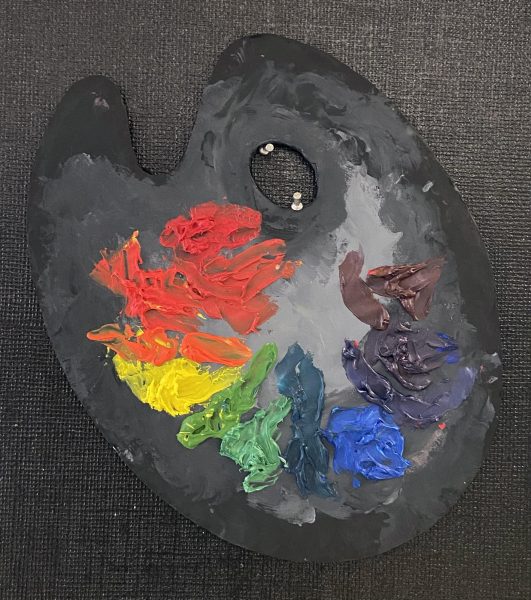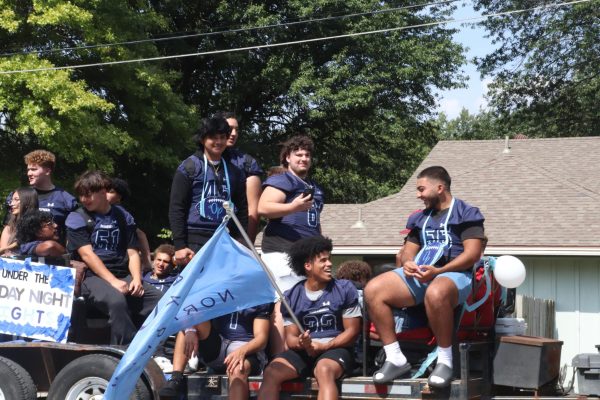My Son Had a Stroke
On the warm Monday afternoon of Aug. 29, Michelle Biswell was driving her daughter to cheerleading when she got a phone call from Children’s Mercy Hospital where her oldest son, 19, Matthew Biswell was lying. She handed the phone to her daughter who answered.
“On the phone, we were told Matthew had a stroke,” Michelle said. “It was extremely scary, I wasn’t told exactly what was going on and I had to stay calm in front of my other kids.”
Trying silently to hold it together, Michelle turned around and sped to the hospital to see her son. When they arrived there Michelle and her daughter rushed back to Matthew’s room in the ICU.
“We sat down and I was trying to gather as much information about Matthew’s condition as possible.”
Michelle was sitting in a chair listening intently, holding in her panic, to her son’s neuro doctor. He was asking her questions about the Saturday before, when Matthew had a seizure and was originally rushed to the hospital. That Saturday, they performed a CT scan and an MRI to determine what was wrong with him.
According to Hopkinsmedicine.org, an MRI or CT scan are the only ways to see a stroke.
The doctor basically explained they did not know what had happened, but Matthew had a considerable-sized stroke and was in critical condition.
“They were asking us to decide whether to send Matthew to the KU neuro ICU for surgery to remove the blood clot that caused the stroke or should they keep him at Children’s Mercy. It was up to me and his dad to decide,” Michelle said.
They found out when they got to KU that they could not do the procedure because the blood clot was too far back in his brain to be able to be removed. But the family was given much needed information.
Michelle was told her son had a stroke due to Cerebral Venus Sinus Thrombosis. Cerebral Venus Sinus Thrombosis, also known as CVTS, is a blood clot in a vein in the sinus cavity that causes a stroke due to the clot blocking the outflow of blood in the brain. All the blood gets stuck in the skull, similar to a pipe backup.
According to hopkinsmedicine.org, This type of stroke is more common in individuals over 18. About 5 in 1,000,000 are affected by this condition each year. Strokes caused by CVTS build up fairly slowly over time, and are usually caused by some kind of underlying blood issue, such as anemia, heart disease, cancer or low blood pressure in the brain. Matthew had blood cancer, but CVTS can also be caused by head trauma, obesity and dehydration.
“Almost all of the symptoms we were told about a stroke caused by CVTS were exactly what had happened to Matthew,” Michelle said.
According to hopkinsmedicine.org, symptoms include “headache, blurred vision, fainting, loss of control in movement of part of the body, seizures, coma.”
“He, to this day, still has swelling and damage and weakness in his right side of his body,” Michelle said.
Stroke damage can cause paralysis, speech problems, continual seizures, vision problems, chronic headache, and even death.
CVTS can be treated by anticoagulants, which are medications for thinning the blood. The disease may be complicated by raised intracranial pressure, which may warrant surgical intervention, according to Wikipedia.
Please note that any kind of brain problems are emergent and should be addressed immediately. If you believe someone you or someone you know have had a stroke or a seizure, please go to the hospital immediately.
“I wish they would’ve found the stroke sooner, but they didn’t see his condition as emergent enough to prompt farther testing, and they were going to wait until that Monday to have their head neuro doctor look at the CT and MRI,” Michelle said.

Hi! My name is Malea Biswell; and I am a writer for NorthmanNews and for The Northmen's Log magazine. I’m very excited to be on the staff this year,...










Judy Biswell • Nov 25, 2016 at 8:54 pm
Loved the article. I lived this nightmare along with Matt’s dad, mom and siblings. As his grandma please push push push to have the doctors hear your concerns anytime there is a medical problem.